The propulsion of boats by means of one or more engines has a major influence on the maneuverability. The simplest method of propulsion is one engine whose working shaft rotates a propeller and a rudder to steer. With this construction, the propeller action must be taken into account and the fact that when you sail backwards the effect of the rudder is less due to the lack of propeller water being driven forward.
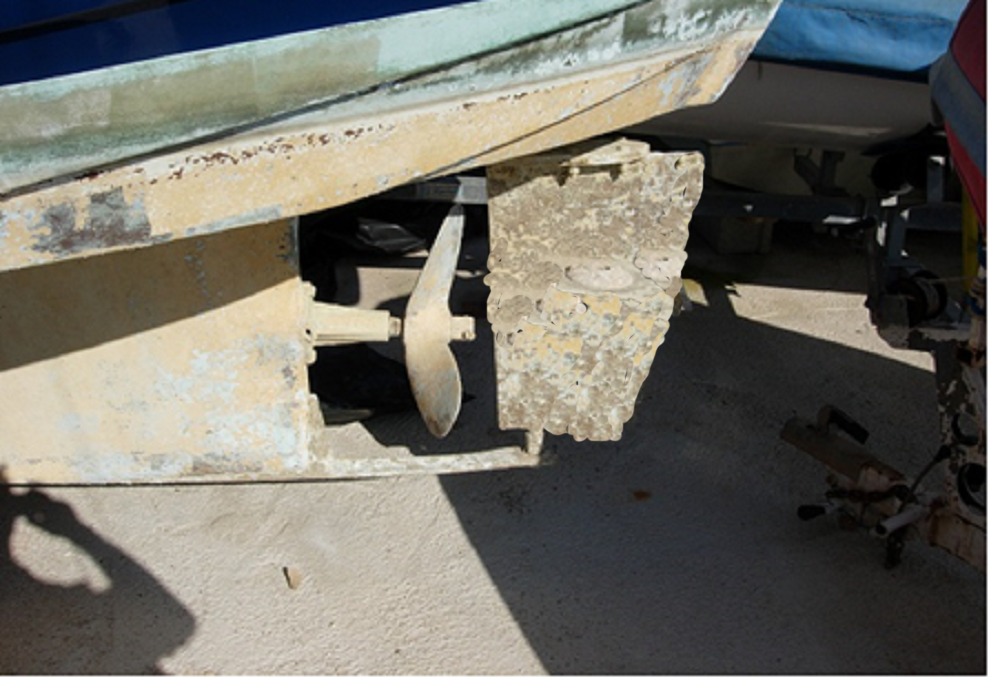
Because a propeller that rotates in the water experiences less pressure at the top of its turning circle than at the bottom, a lateral force occurs, which is called the propeller action. The direction of that side-left force depends on the direction of rotation. A screw that turns clockwise to move forward is called a right-hand screw. For the same reason, a left screw is called that because it turns counterclockwise to move forward. An easy way to determine whether we are dealing with a right or left propeller is to think of it as an extension of the propeller axis and if you can extend the right arm further than the left, it is a right propeller. Conversely, if you can extend your left arm further, it is a left screw.
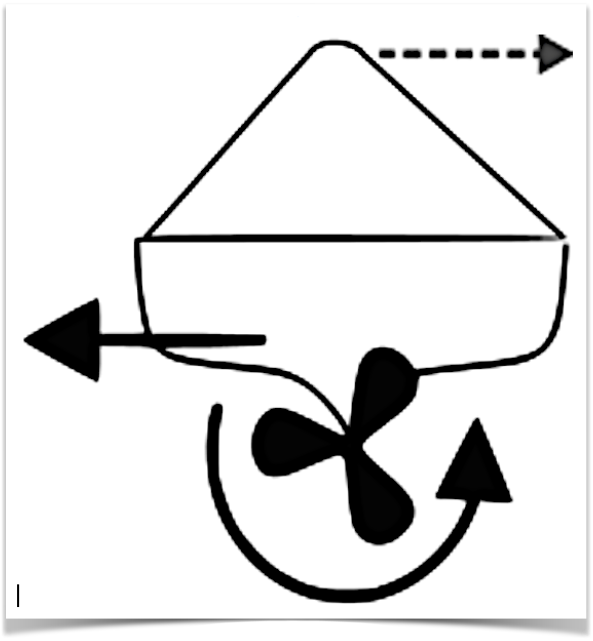
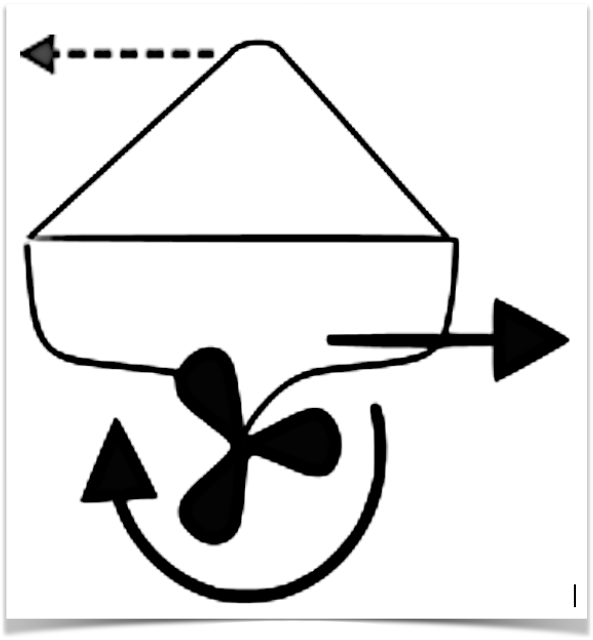
The single axle therefore provides the most effect and when the ship is sailing backwards there is no pressure on the rudder, so you can only steer if you sail a little. The operation can also assist with maneuvering if it has the desired direction of the stern. On most boats a single propeller will be a right hand propeller, remembering the following: Port moor and starboard round
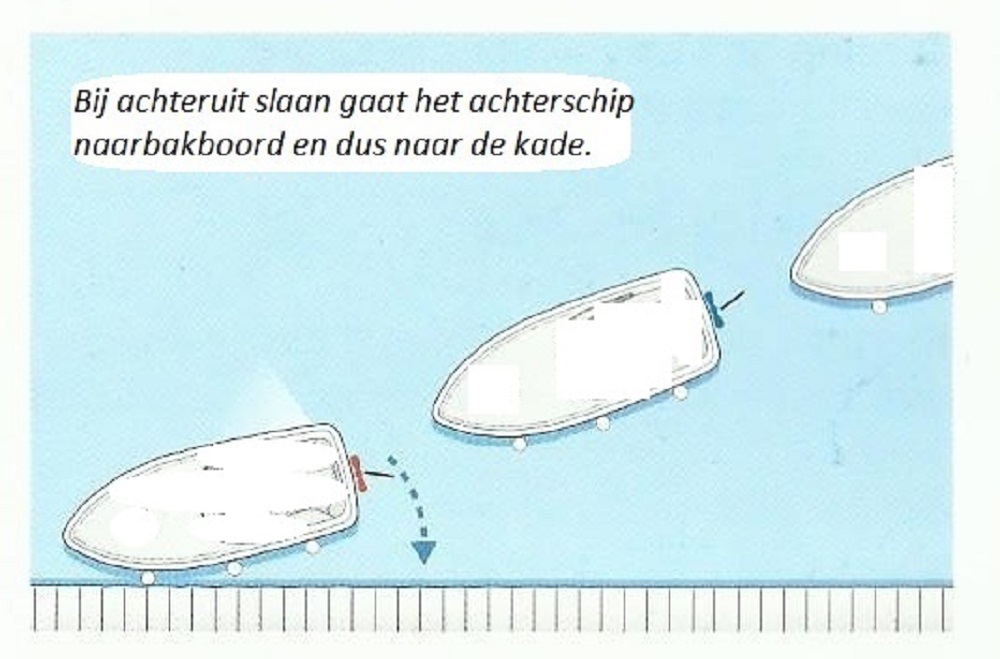
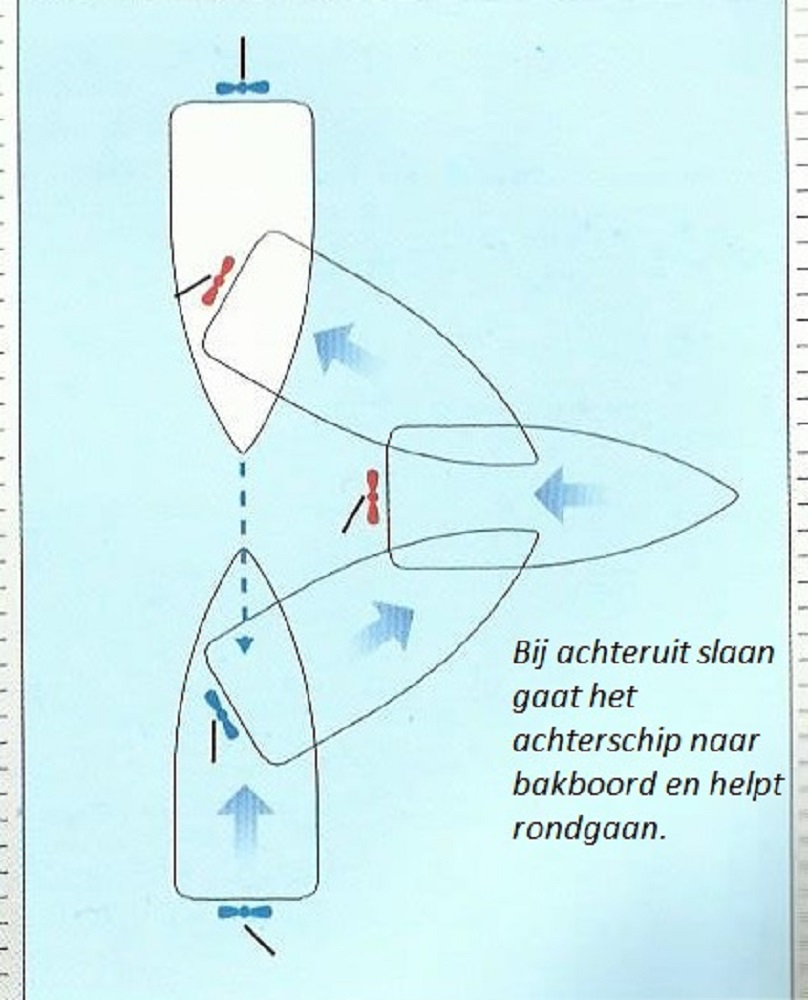
Maneuvering with two engines.
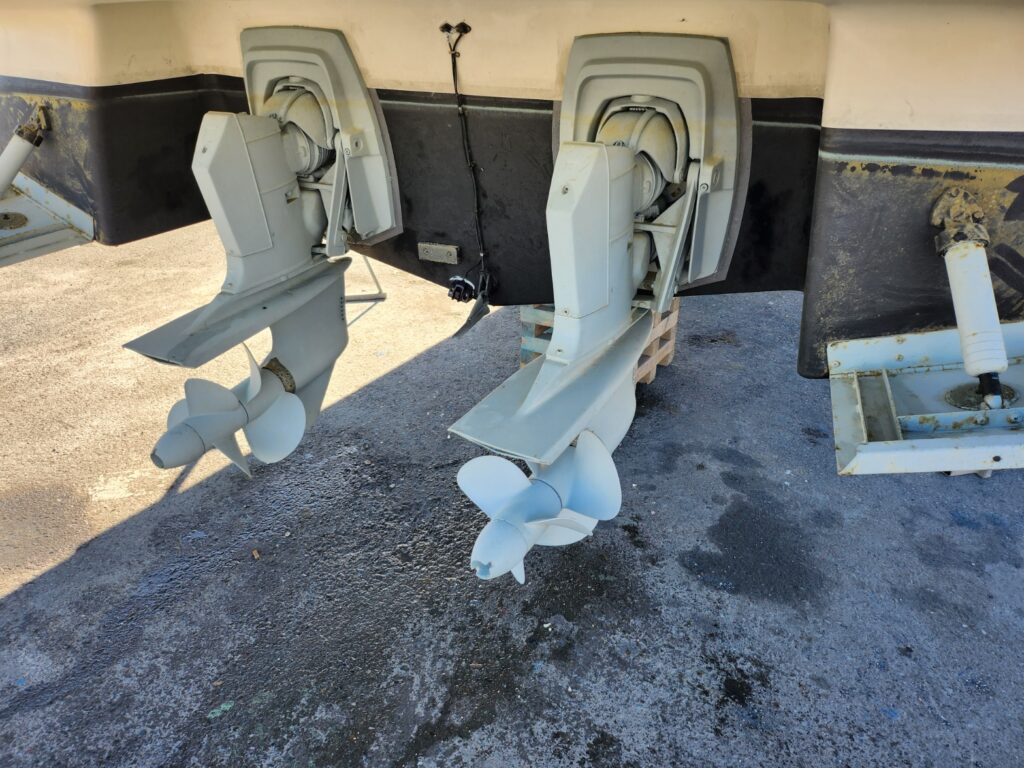
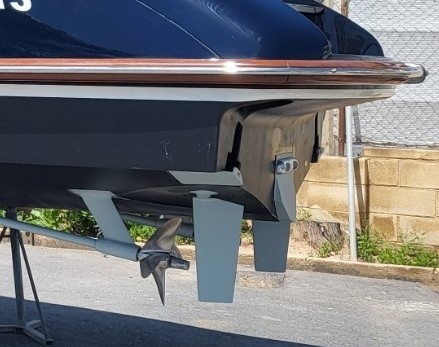
By working one engine forward and the other backward, the ship turns. With fixed axles this is done in a very controlled manner because, assuming a slowly rotating engine, the steering effect through the rudder is nil for the engine that rotates backwards and limited for the other, while with stern drive the steering effect is much more intense and you therefore have to adjust the position of the " rudder” must be kept a close eye on. One of the most common maneuvers is mooring backwards with the stern to the quay, common in Mediterranean ports. Sailing backwards is much more difficult than sailing forwards, so try to limit reverse sailing to straight astern and not with a turn. But remember when you go backwards you have to look backwards.
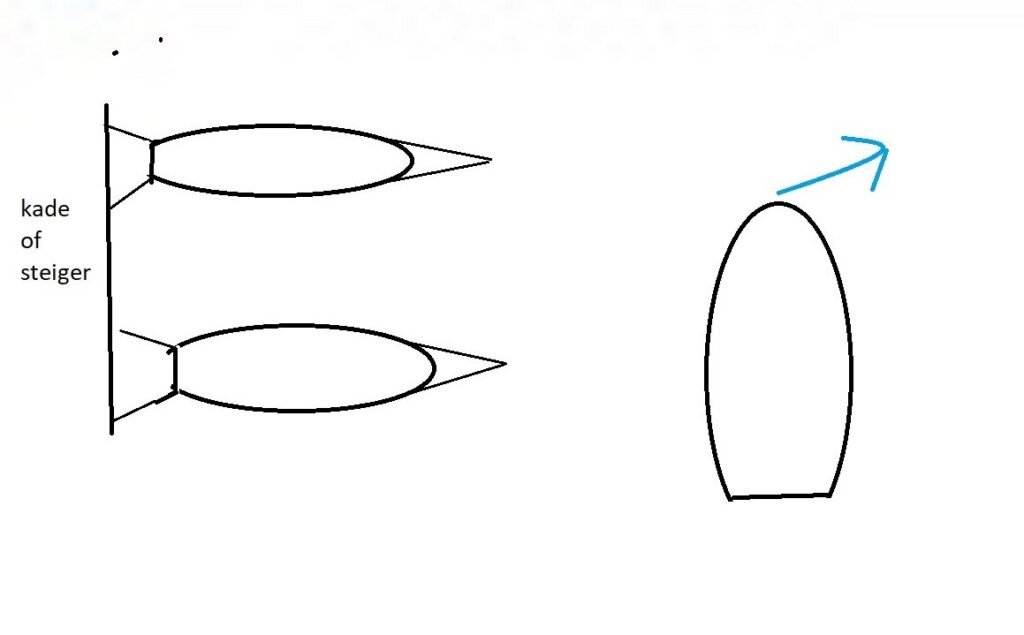
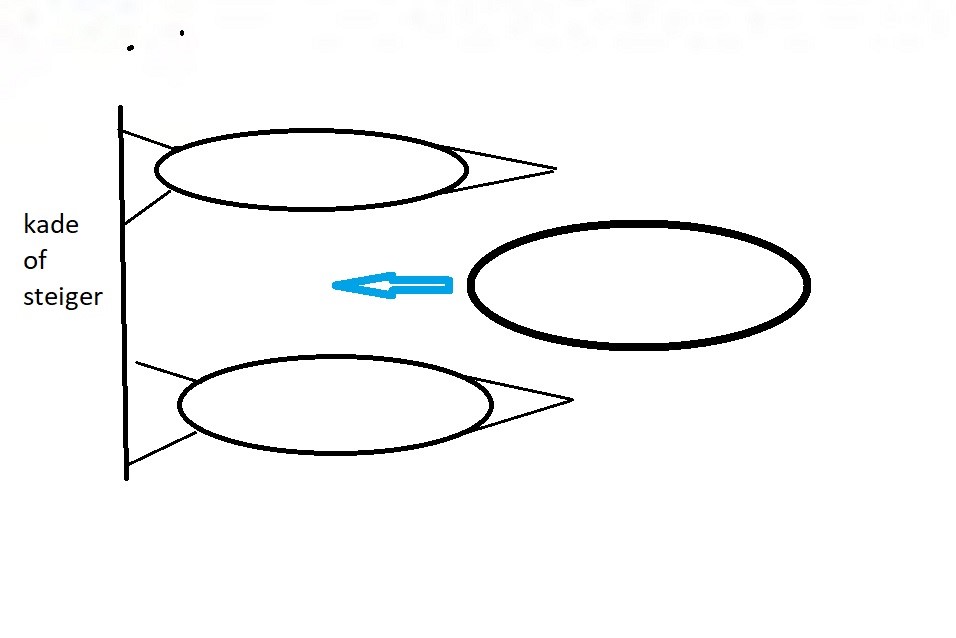
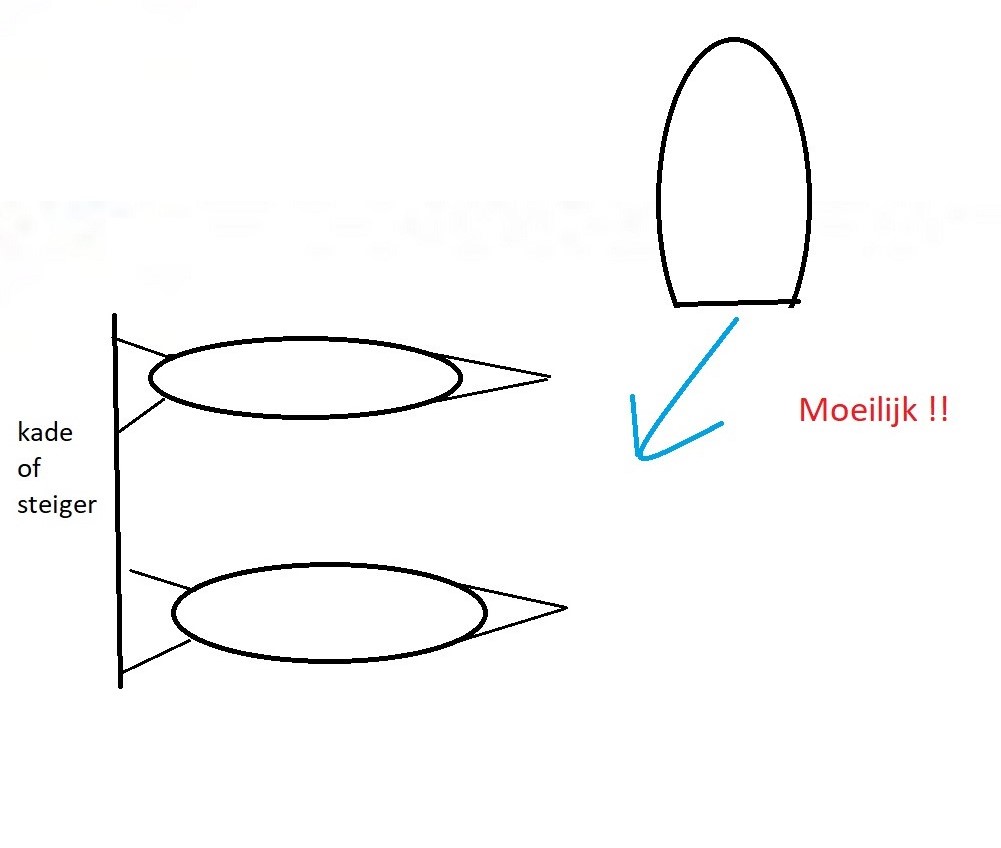
Maneuvering is always made easy by bow and/or stern thrusters and the Volvo Penta IPS, which allows steering with a joystick. On the other hand, people keep putting horsepower in the boats and you have to learn to deal with it. When sailing and mooring in the ports, the motto is: the slower the better.
Anchoring.
The anchor gear is not only installed to lie quietly in a bay and enjoy the sun, water and provisions. The anchor gear is also part of the safety equipment. In bad weather conditions it can contribute to the preservation of your boat. If you are in danger of drifting towards shore or other obstacles (oil rigs, wind farms or fish farms) due to engine failure, you can slow down the drift by lowering the anchor, even if it does not reach the bottom. On small boats, a floating anchor or tying a bucket to the anchor rope or chain can have the same braking effect. The chain can also be used if you need to be towed by attaching the tow line to the chain and loosening the chain to create a kind of shock absorber. When anchoring, the following must be taken into account: The water depth, the wind and the current. To anchor safely, you must slacken the chain 3 to 4 times the water depth and the chain must be long enough. On small ships where the chain turns into rope you must pay out at least 6 times the water depth.

The wind and current together will determine the direction in which the boat will lie. Most nautical charts indicate currents and you will experience wind. The result determines the direction in which you will be moored and is the direction in which you bring your boat before lowering the anchor. If there are other ships in the area, you can see their direction. You sail slowly in that direction and bring the ship to a stop and drop anchor. To arrive at this position, it must be taken into account that the final position will end up further to the rear by loosening the chain. The result of wind and current should drive the ship backwards, after which loosening the necessary chain will hold the anchor. If the result of wind and current is very little, the motor can help with reversing. On large ships, the weight of the chain will be the main factor holding the anchor.

Changes in weather conditions and currents can cause the ship to rotate around the anchor and this must be taken into account when determining the anchorage. When looking for a favorable anchorage spot(s) during a tour around Ibiza, for example, it is important to manage the weather forecast carefully so as not to be surprised at night by strong winds in the bay that was still lovely and calm the day before. .
While at anchor, it is advisable to switch off the batteries for the engines, so that you do not end up with empty batteries when you want to start the engines again. This certainly applies if you stay at anchor overnight. It is also important to start the engine(s) before raising anchor, so that you are not surprised if they do not want to start. It is also important for the batteries, which operate the anchor winch and can use the help of the charging current.
Some more nautical expressions: Lying at anchor, while actually lying behind the anchor. The direction of wind is named after the compass direction where the wind comes from, the direction of currents is named after the compass direction where the current goes.
Sailing slowly backwards is called a heaving ship. One way to determine when a (large) ship comes to a standstill is when the propeller water from the reverse-turning propellers has reached amidships.